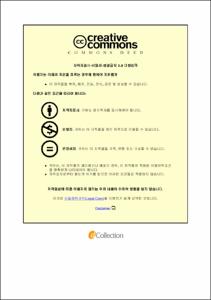간세포암의 예후 결정인자로서 유전체 변이 및 면역분자적 특성의 중요성
- Abstract
- 간세포암은 암으로 인한 사망의 세 번째 순위를 차지하는 암종으로, 최근 이에 대한 분자유전학적 특성이 연구되고 있으나 실제 진료에 적용하기에는 아직 요원한 실정이다. 본 연구는 206례의 수술적으로 절제된 간세포암 조직에 대해 전사체 및 유전체 분석을 실시하였고, 이를 통해 임상 예후에 영향을 미치는 암종 및 면역반응의 생물학적 변이를 확인하고자 하였다. 유전자 발현량 분석 결과 간세포암은 다섯 가지의 소분류로 구분할 수 있었다. AMC-C1 군은 고분화 암종으로 생각되었고, AMC-C2 군은 높은 수준의 상피-중간엽 전이를 보였으며, AMC-C3 군은 CTNNB1 유전자의 변이를 특징으로 보였고, AMC-C4 군은 줄기세포와 유사한 특징을 보였으며, AMC-C5 군은 암종-정소 항원의 발현을 특징으로 보였다. 이들 중 AMC-C4 군은 다른 군에 비해 좋지 않은 예후를 보였고, 다른 유전자 발현 공개 데이터에서도 유사한 결과를 보였다. 또한 면역유전체 분석을 거쳐 간세포암의 약 1/3이 세포융해 작용 및 세포독성 T 세포의 양이 증가되어 있는 면역유발성 소분류에 속해 있는 것을 확인할 수 있었고, 이 분류와 유전자 복제수 변이 및 microRNA 발현 사이의 유의미한 상관관계를 확인할 수 있었다. 또한 면역유발성 소분류에 속한 증례는 그렇지 않은 증례에 비해 더 좋은 예후를 보이는 것을 알 수 있었다. 마지막으로 수술 후 조기 재발과 연관을 보이는 생체 표지자로 S100P를 발견할 수 있었고, 이 생체 표지자는 독립적인 검증 군에서도 유의미한 결과를 보였다. 이 연구를 통해 간세포암의 생물학적, 임상적 특성이 실제 환자 진료에서도 확인 가능한 유전체 및 면역분자적 특성의 차이와 관련이 있음을 확인할 수 있었다.|Hepatocellular carcinoma (HCC) is prevalent worldwide and the third leading cause of cancer-related deaths. We used high-resolution transcriptomic and genomic analysis of 206 resected HCC samples to identify biological alterations in tumors and immune systems influencing clinical outcomes. We identified five discrete subtypes of HCC: AMC-C1, well-differentiated tumors; AMC-C2, tumors displaying high levels of epithelial-mesenchymal transition (EMT); AMC-C3, those harboring CTNNB1 mutations; AMC-C4, those with stem cell features; and AMC-C5, finally a subtype expressing cancer testis antigen (CTA). The subtype with stem cell features (AMC-C4) was associated with the worst prognosis both in our dataset and other datasets. An immunogenomic analysis showed that one third of the tumors had an immunogenic subtype characterized by enhanced cytolytic activity, higher levels of cytotoxic lymphocytes (CD8+ to Treg cell ratio) and higher expression of immunomodulatory genes, and patients with these tumors had a better prognosis than those with the alternative immune-desert subtype. Multiple control networks involving microRNAs and copy number alterations were implicated in tumor-immune interplay and the resultant outcomes. We also discovered and validated a promising trackable biomolecule and actionable target, S100P, associated with early recurrence after HCC resection. We conclude that the bioclinical phenotypes of HCC are based on collaboration between genetic and immunomolecular architectures.
- Issued Date
- 2018
- Awarded Date
- 2019-02
- Type
- Dissertation
- Alternative Author(s)
- Hee Sang Hwang
- Affiliation
- 울산대학교
- Department
- 일반대학원 의학과
- Advisor
- 성창옥
- Degree
- Doctor
- Publisher
- 울산대학교 일반대학원 의학과
- Language
- kor
- Rights
- 울산대학교 논문은 저작권에 의해 보호받습니다.
- Appears in Collections:
- Medicine > 2. Theses (Ph.D)
- 파일 목록
-
-
Download
 200000171220.pdf
기타 데이터 / 3.28 MB / Adobe PDF
200000171220.pdf
기타 데이터 / 3.28 MB / Adobe PDF
-
Items in Repository are protected by copyright, with all rights reserved, unless otherwise indicated.